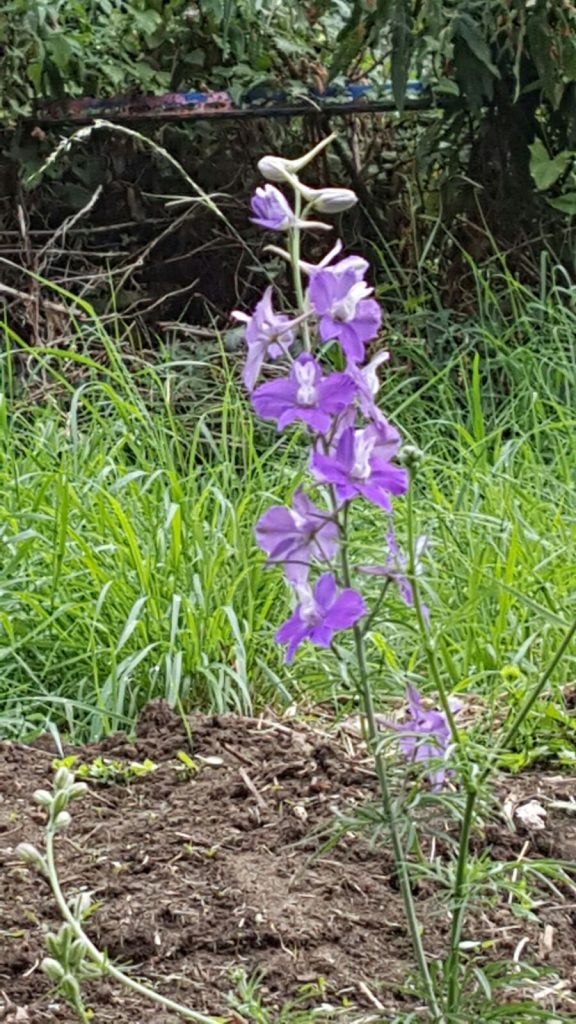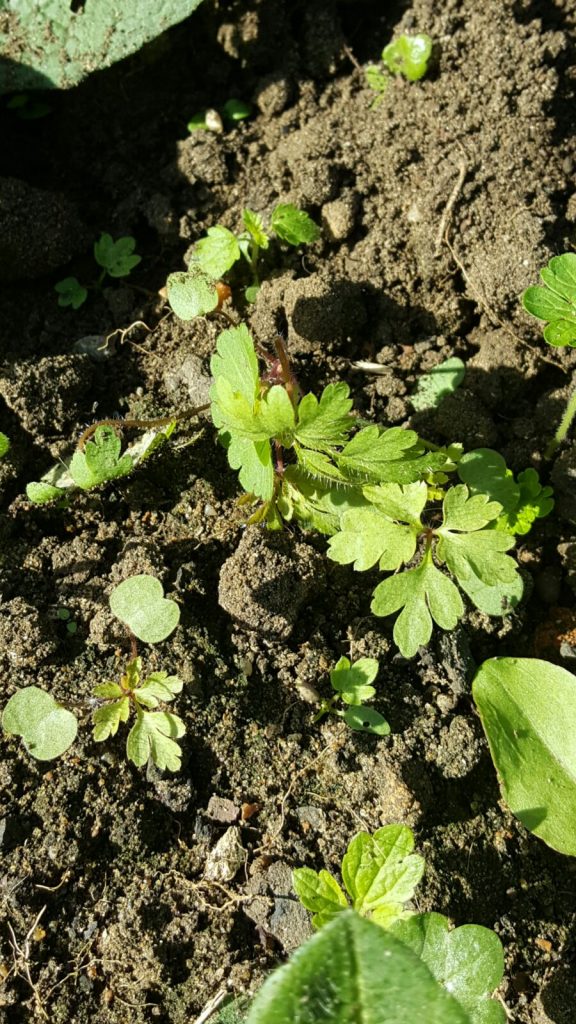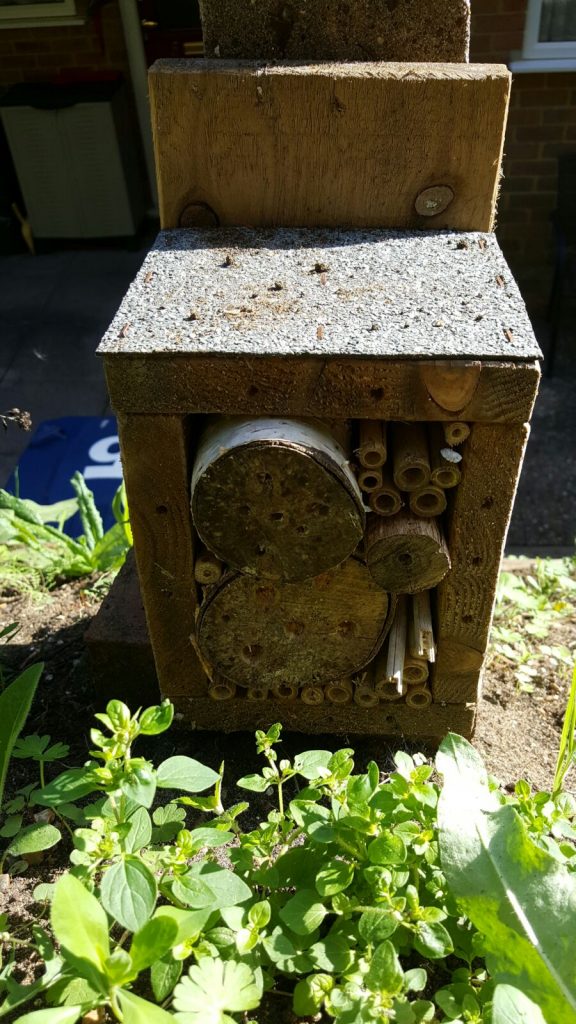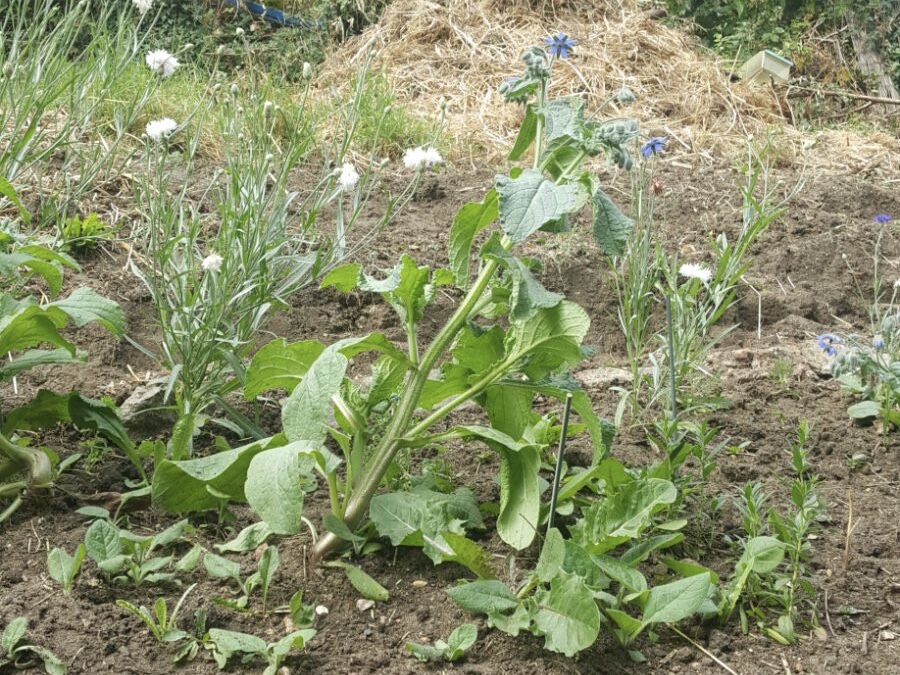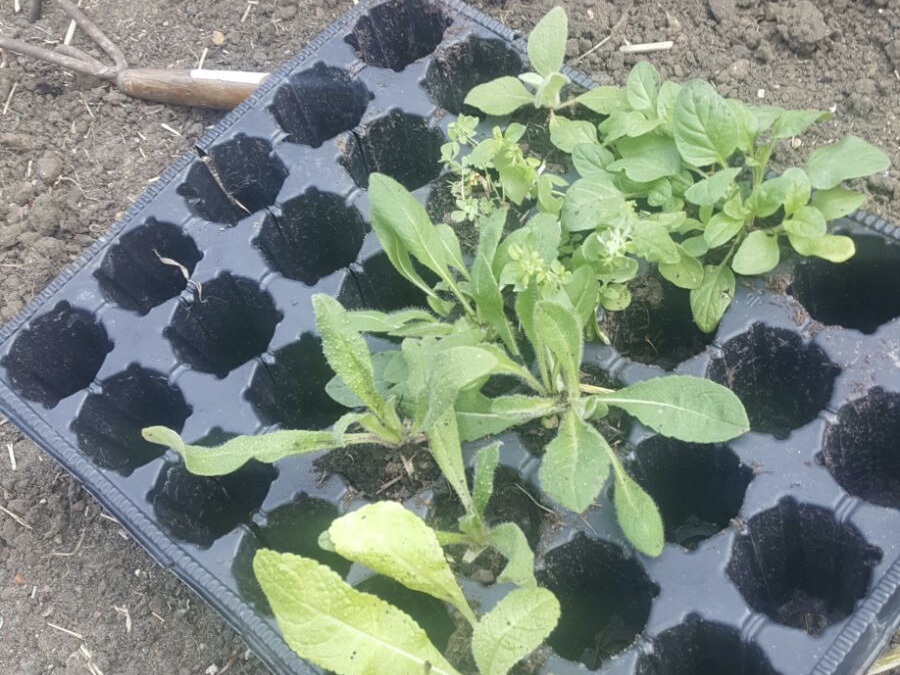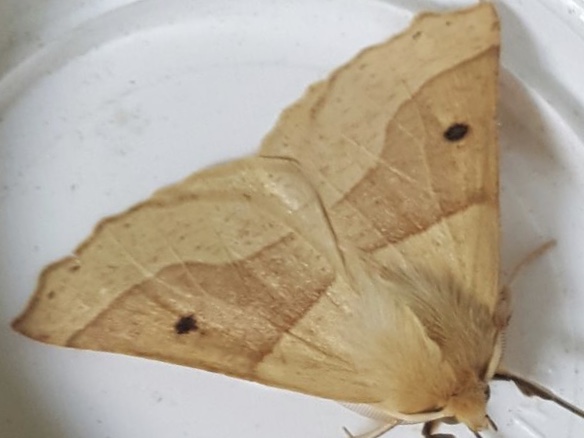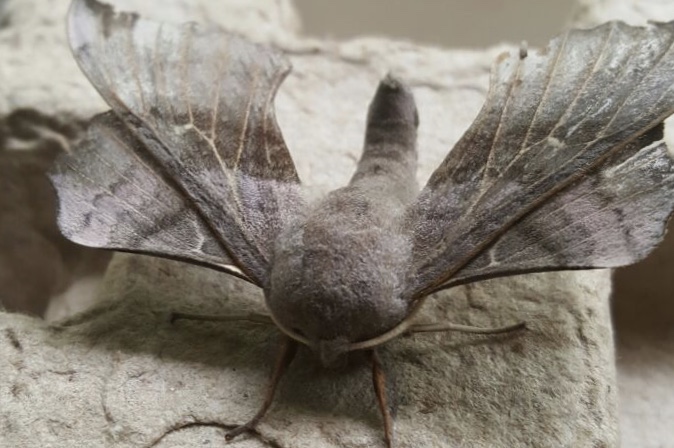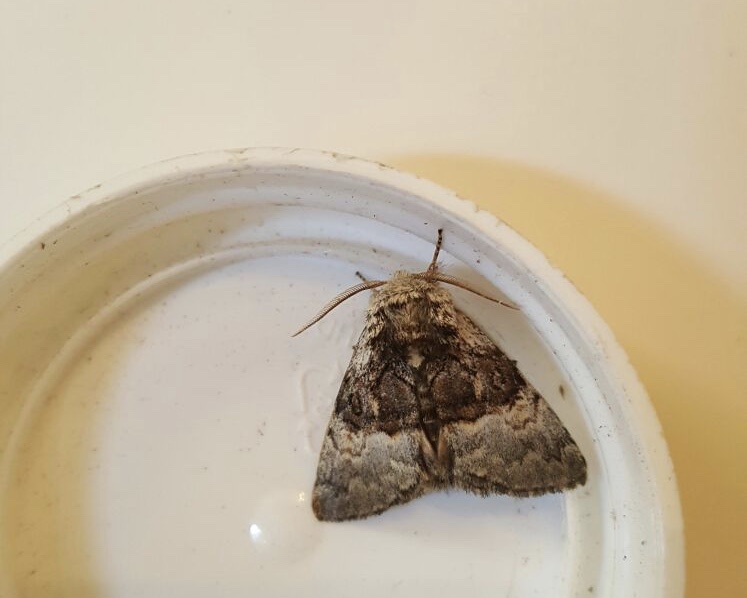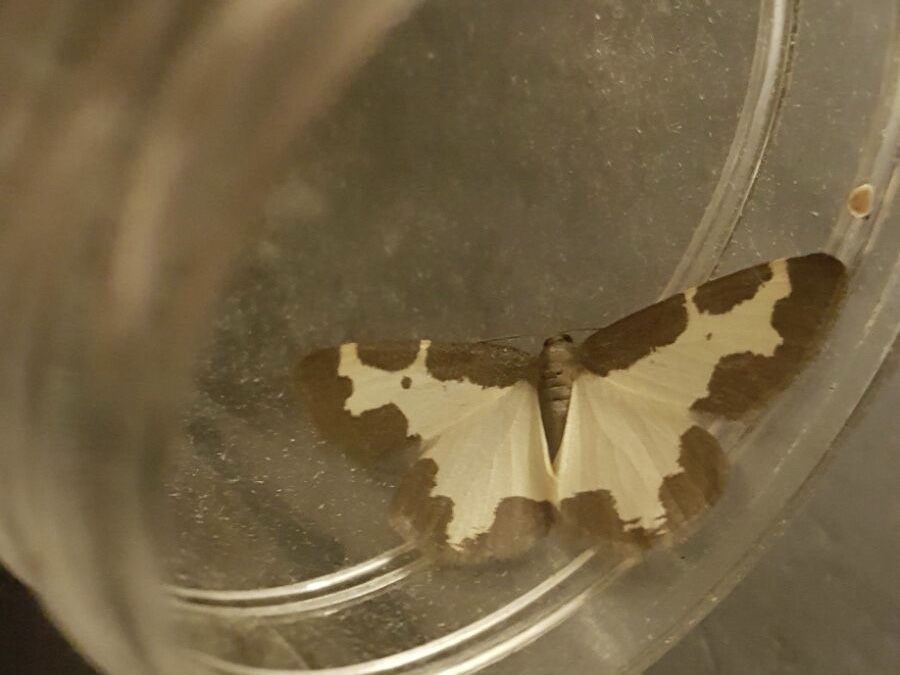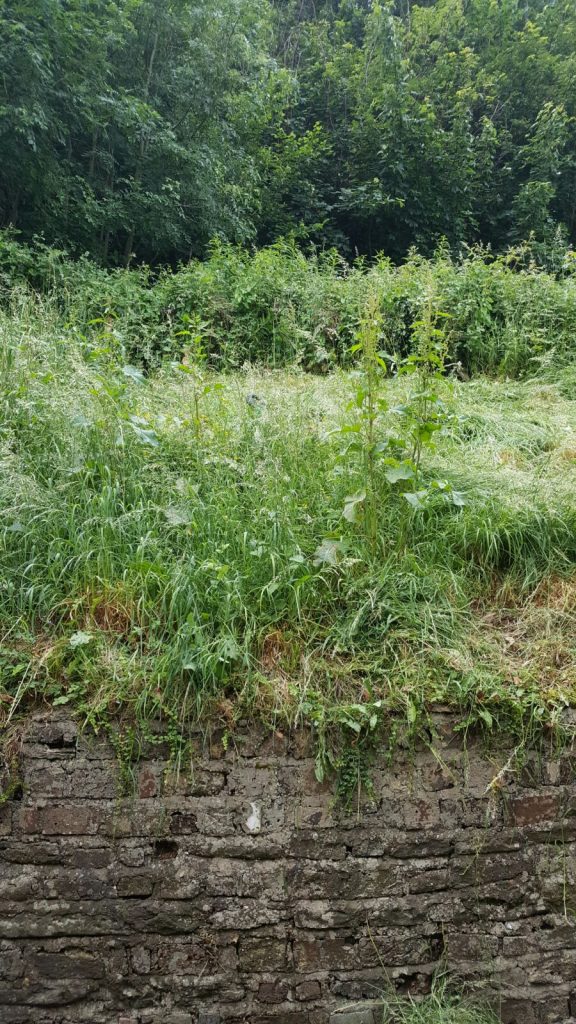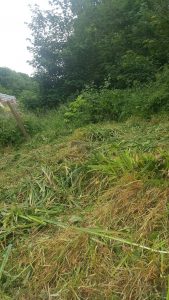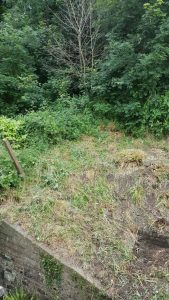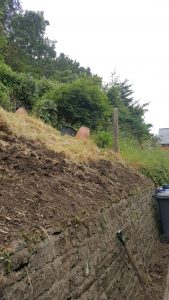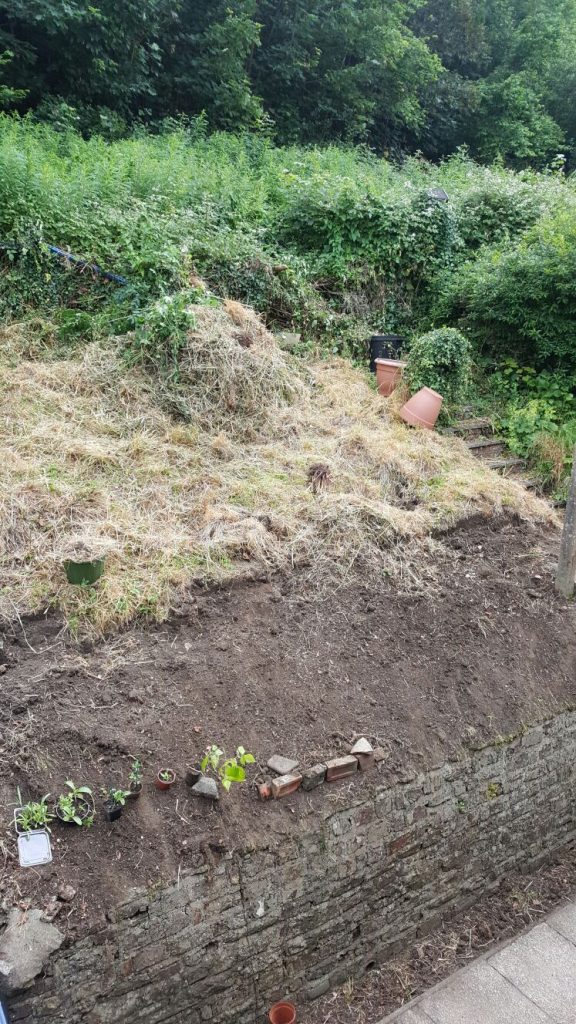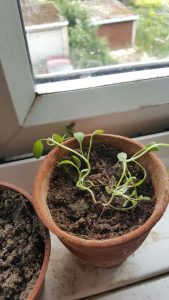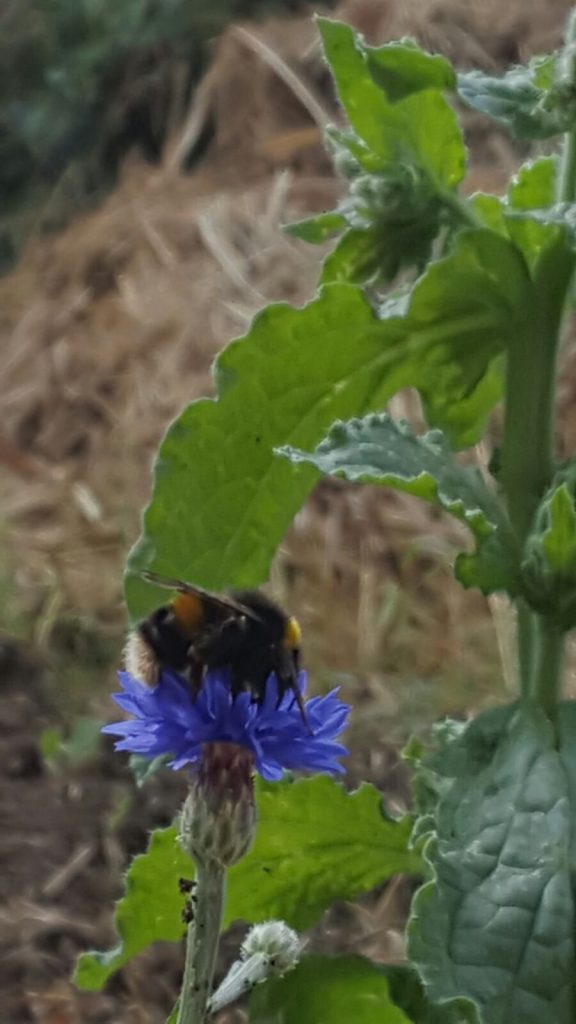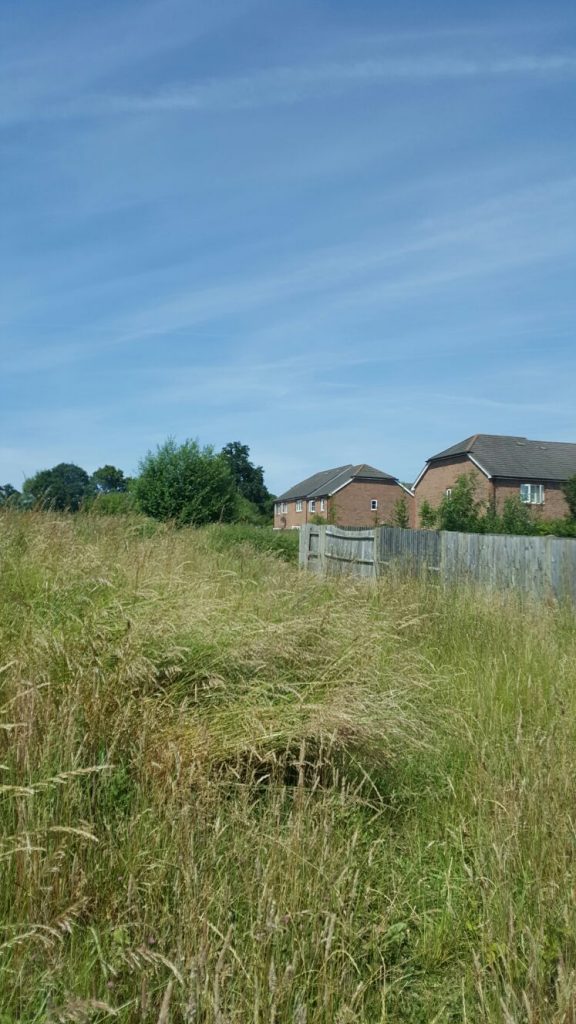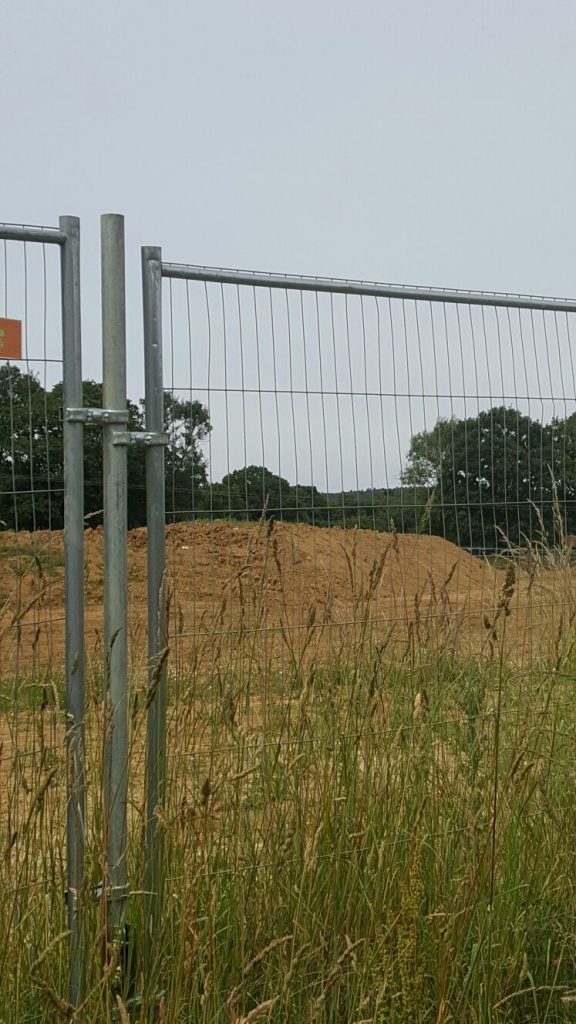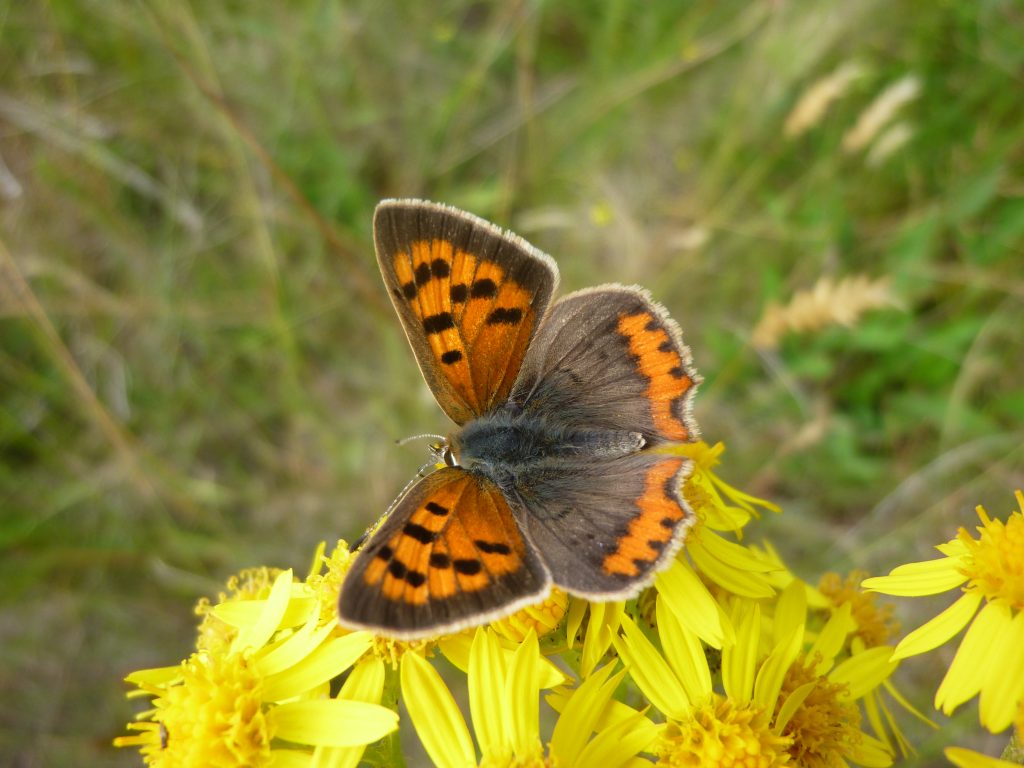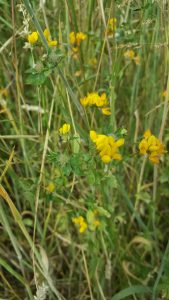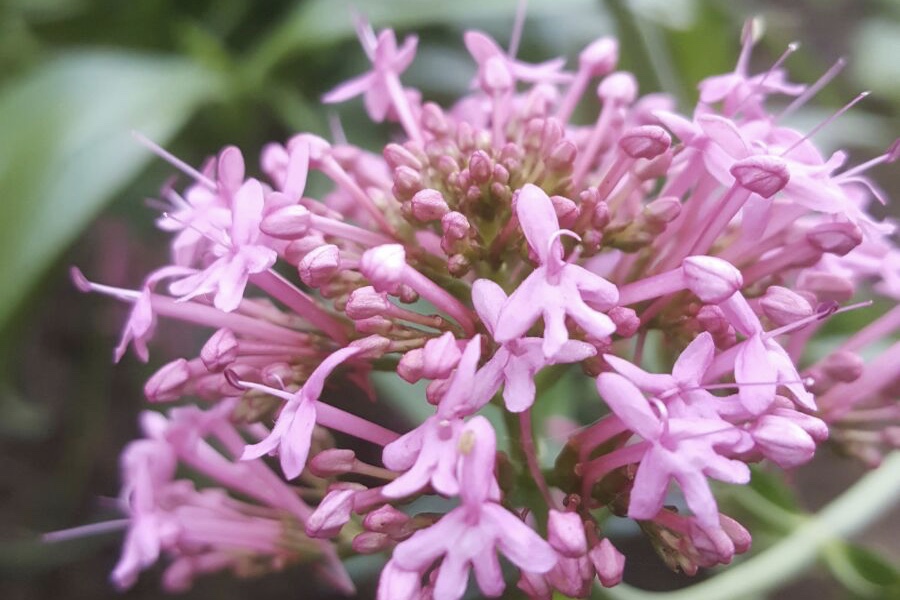
On the news the other day, there was a report stating 2018 was looking like it was going to be the hottest year on record. I’ve heard this kind of report a lot over the past 20 years and whilst listening to facts and figures in the report I looked over the mini reserve and pondered the effects of the weather on its progress.
I went outside to have a closer look and not having any engagements for a couple of hours gave me the chance to clear another small area and remove most of the weed species root by root.
In the last week the temperature has dropped considerably and there had been a notable drop in butterfly numbers visiting the area, the occasional Large White visiting the cabbage being the only regular species observed. I found a dying individual under the cabbage the other day which probably indicates the ending of the season. There was still quite a lot of colour on show with several species still in flower providing food for the regular bees that are daily visitors. Still the most numerous flowering species is Borage and although I previously mentioned they were already up/downgraded to a weed species their importance was obvious when you watch the Bees feeding. Next year I intend to manage this species carefully. One species that had been confusing me was the Hysop that I had grown from seed indoors and planted out as soon as space was available. The plants had grown well and seemed to look like they were about to flower but failed to do so until last week when their deep purple coloured flowers added to the food for now bees and hoverflies.
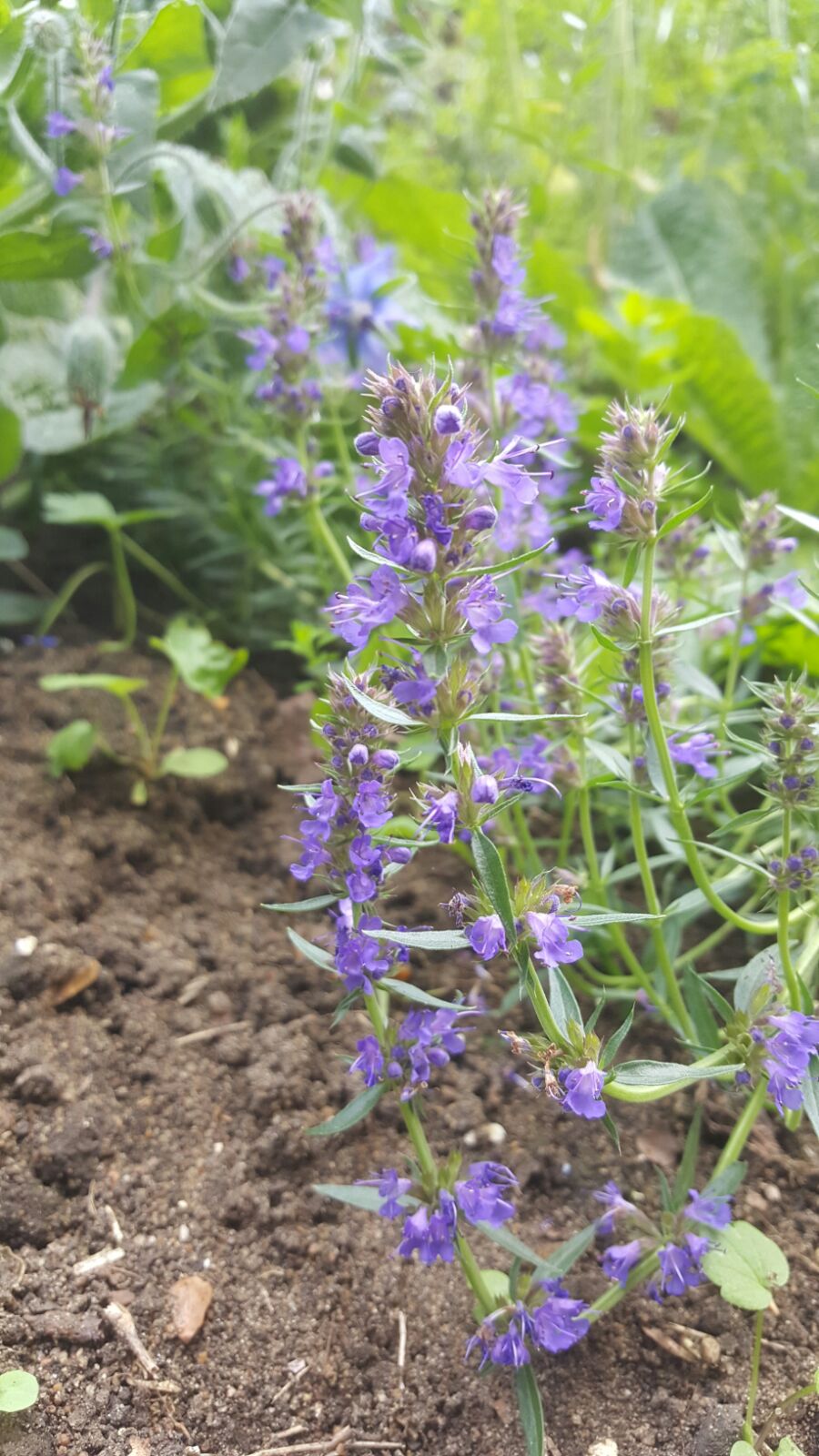
More colours came from the continuous Cornflowers spectacle! The hardiness and adaptability of this species has amazed me. As previously mentioned, the whole site is on a quite steep slope and many of the flowers that have emerged this year have grown up vertically and then fallen over with the weight of flowering heads, or rain or even strong winds and then grown horizontally over the grounds for a short distance and grown another vertical shoot that has often ended up with new flowers on them. Nature is adaptable. The Cornflower flowers seem to be experts at doing this. They are also a very long time flowering with my very first plant to flower in the garden being a Cornflower and now, still 8 weeks later, producing new flowers.
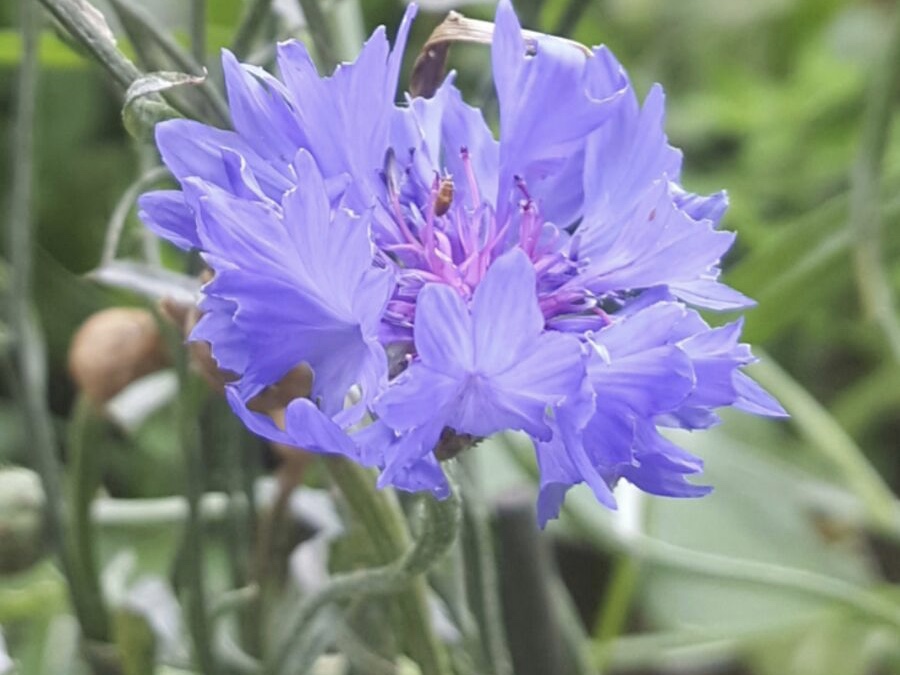
This species adaptability is further shown by the fact it can grow from seed to flower in 3 – 4 weeks. A few Groundsel flowers bloomed with their small yellow flowering heads giving a different colour to the mix.
My mind is already drifting to the possibilities for next year’s show of colour and insects.
Having been fortunate to have worked on the majority of wild habitats that are to be found in the UK from mountains to moorland and Bogs to beaches I know that all areas that are managed for wildlife need a management plan no matter how large or small the area is. It’s in my blood really and my views have immediately been challenged when I realised that several of the flowering species I have grown are not native species to the UK but are introduced garden plants. Much of my time doing practical conservation work was spent removing or killing invasive plant species like Japanese Knotweed, Himalayan Balsam and Daffodils to name a few, and all these started out as “harmless” garden plants!
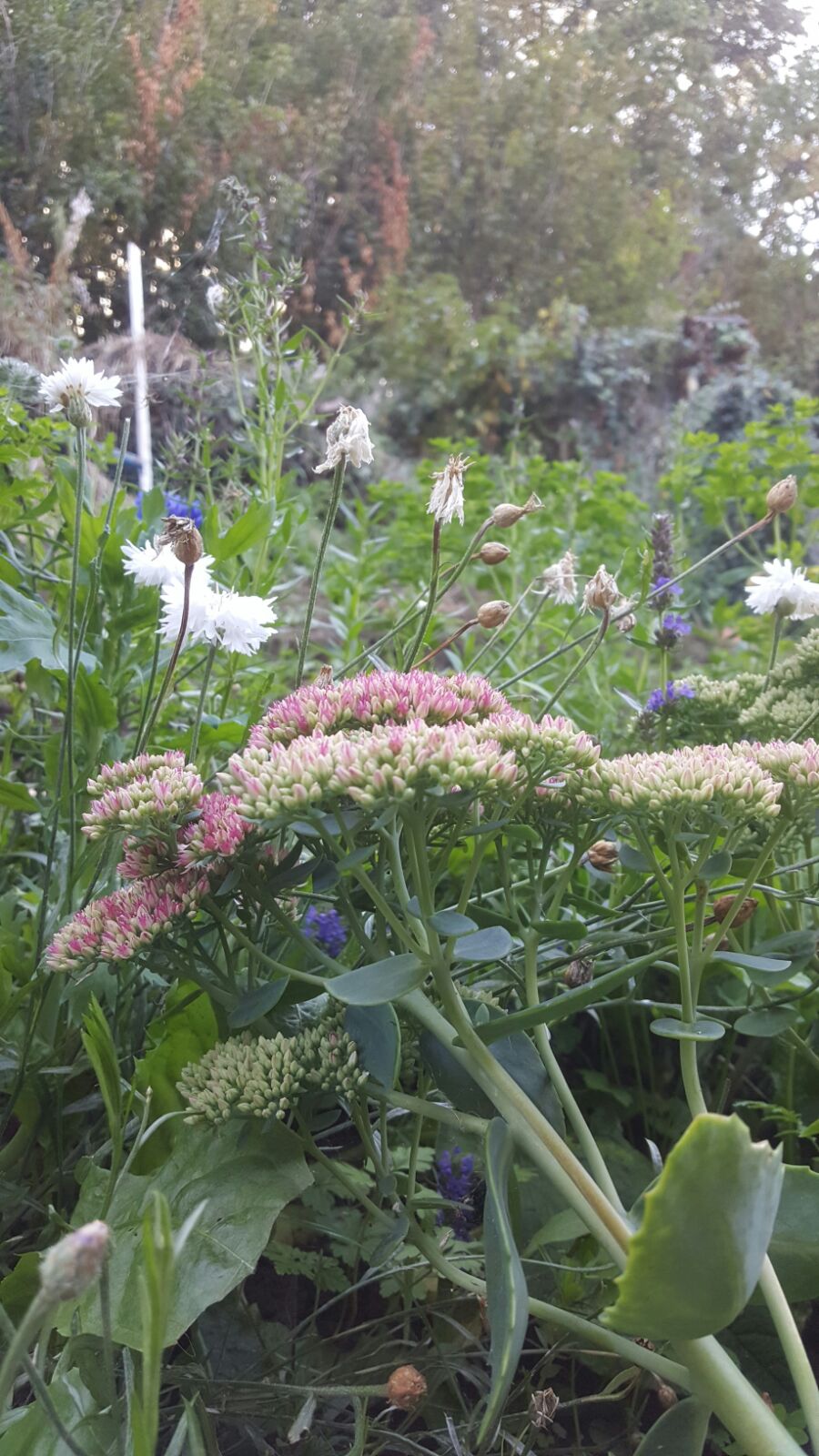
Was I creating or contributing to a new problem?
The seed mixes I had planted were all carefully selected species good for bees and butterflies and were advertised as such. I felt OK with this and realised that the non native species included had already provided vital food for a whole variety of bees and other insects.
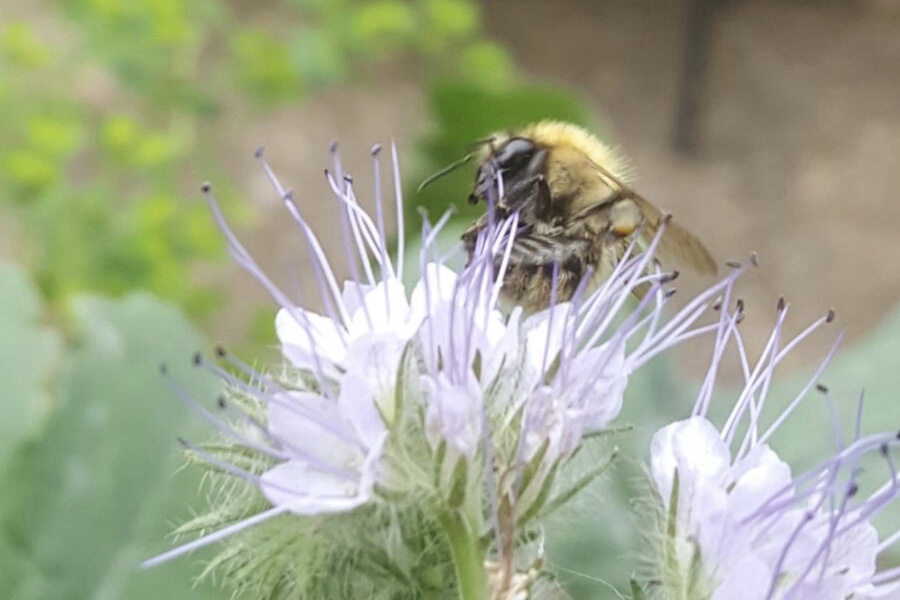
It was also increasing my knowledge as I noticed species in flower that I’m not familiar with. Feel free to help!
Management is vital to create the optimum balance of flowering species. Lots of work to do over the winter but so far so good and there’s still time to plant a few more seeds………

